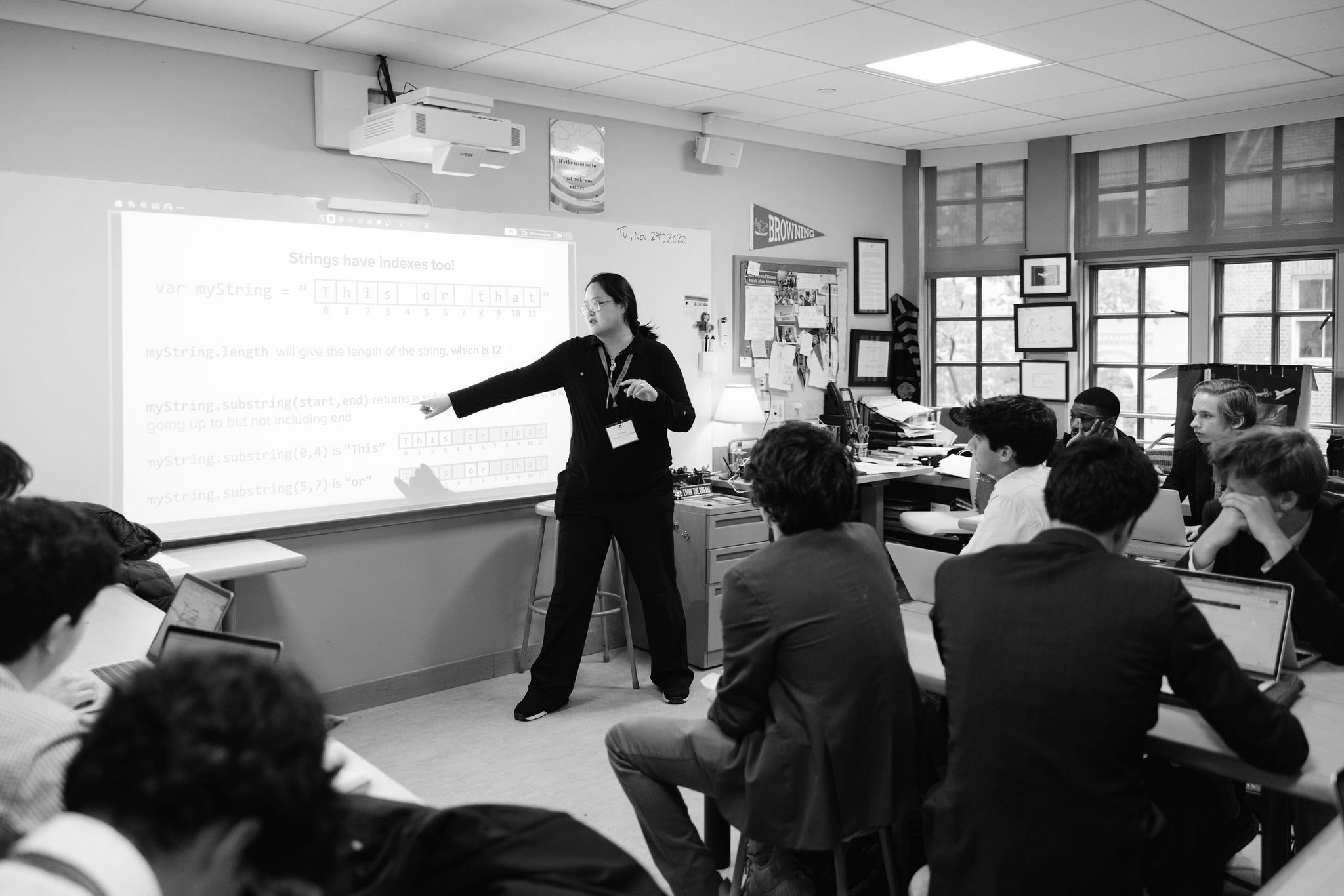Teaching Boys Well
This edition of Margin Notes is guest written by Danielle Passno, Assistant Head of School / Director of Teaching and Learning
At Browning, we have embarked on a multi-year process to determine what habits of teaching allow boys to learn better.
Through professional development, our teachers have studied the merits and pitfalls of various models of learning. Through all of our time thinking about and reading the research on boys, as well as experiencing learning with them in the classroom, we have tailored our approach to learning into a model that we believe works particularly well—a model rooted in clear targets and intrinsic and extrinsic motivators for learning..
Target-Focused Teaching (TFT) is Browning’s unique way of ensuring deep learning in all boys. Composed of four, research-supported elements for deep learning, TFT ensures that our boys experience a rich curriculum that builds life-long knowledge and skills. The four elements are:
Using the full range of rigor defined by Webb’s Depth of Knowledge scale—a vocabulary and frame of reference for levels of engagement with content
Articulating learning targets
Using formative and summative assessments
Designing cycles of feedback and reflection
In order to learn deeply and lastingly, we believe that a student needs both foundational knowledge and the ability to apply that knowledge beyond school. In order to do so, boys must experience learning that travels through all four levels of Depth of Knowledge. In many ways, this belief is what separates us from schools that use competency-based approaches because we see that content and foundational knowledge are the essential soil in which inquiry and skill development must take root. For example, we do care about teaching the dates and facts that are learned in a traditional history classroom—even if they can be looked up online—because we believe having a command of that content within one’s own head allows a boy to feel both proud of his knowledge and form new lines of inquiry of his own.
Learning targets are the compass of our curriculum because they articulate where a student is trying to go in his learning. The benefit of having an articulated set of learning targets that the boys see is that they have a roadmap for their education. These are written in three tiers:
K-12 Subject Targets: what we are trying to teach across our K-12 curriculum
Grade-Level-Specific Targets: the skills and content we teach in a specific grade or course
Lesson Targets: the immediate content necessary for a specific lesson
At Browning, we use a variety of assessments to determine whether a student has reached proficiency in a learning target. Tests, papers, discussions, presentations, and portfolios are all forms of assessment. The two categories of assessment we use are:
Formative assessments: used to give feedback about learning so a student and teacher both know what to do next
Summative assessments: used to determine the level of proficiency a student has attained on one or more learning targets and often include a grade
Lastly, cycles of feedback are the hallmark of the Browning program. We give students learning targets and learning experiences, and then we give them feedback on how well their work met the target. The feedback is the catalyst for the student knowing what to do next in his learning. Often feedback is given in the form of a rubric and comment that shows where a student should focus his learning.
The true benefit of using the four elements of Target-Focused Teaching is increased motivation for boys. When a boy is motivated to learn because of the clear structure of his academic program, the relationships he has developed, and the nature of his assignments, then there is no stopping what he can do in this world. That is what we see at Browning every day.

